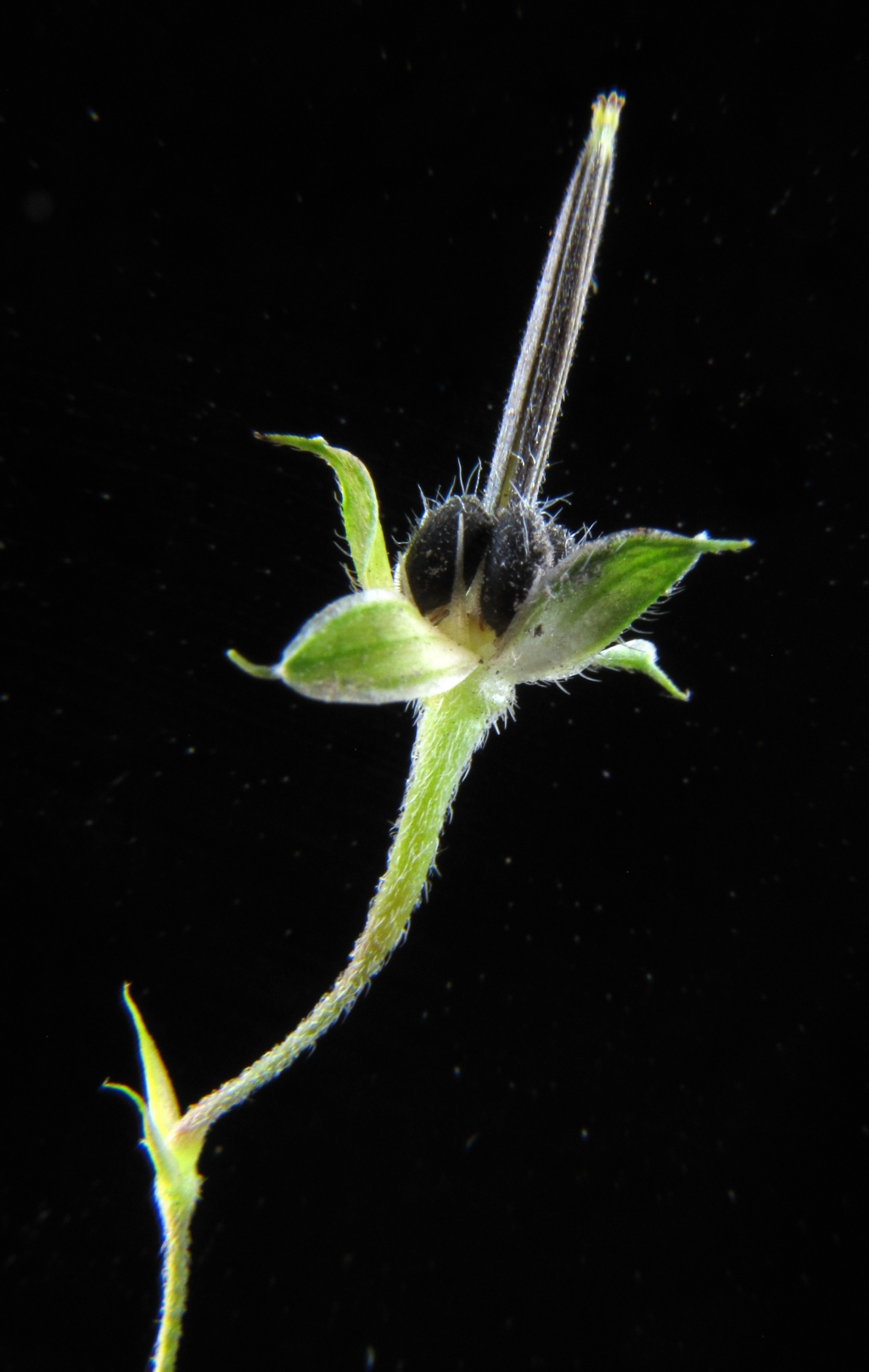Geranium gardneri
de LangeProstrate or scrambling perennial; stems to 2 m long, hispid, with short to long, recurved to spreading hairs, rarely glabrescent; taproot thickened. Leaves reniform (to c. triangular on upper stems), 1–4 cm long, palmatifid into 3–5(–7) broad, 2- or 3-sected, sometimes toothed, primary lobes; ultimate lobes acute, or obtuse and minutely mucronate; upper surface with scattered curved hairs; stipules ovate to triangular, acuminate, often laciniate. Flowers solitary or paired; peduncles 0.5–2.7 cm long, pedicels 0.5–1.6 cm long. Sepals narrow-ovate, 3.5–4 mm long, acute, becoming broad and vertically infolded in fruit, pubescent with minute glandular and eglandular hairs and longer curved or spreading hairs; mucro 0.5–1 mm long, margin translucent, usually ciliate; petals obovate, 4.5–5.5 mm long, truncate to retuse, bright to pale pink at apex grading to white; anthers off-white with fine purple dehiscence lines. Fruits 11–16 mm long; mericarps sparsely pubescent with short recurved to divergent hairs becoming longer toward awn, and scattered long hairs; suture margins not ciliate but sometimes with occasional short hairs; seed rugose with oblong and isodiametric alveolae and occasional membranous deposits. Flowers throughout the year, mostly Oct.–Apr.
GleP, Brid, VVP, VRiv, GipP, OtP, WaP, Gold, CVU, GGr, NIS, EGL, EGU, HSF, HNF, OtR, Strz, MonT, VAlp. Also SA, NSW, ACT, Tas. Also native to New Zealand. A widespread species occurring predominantly within open-forests and sheltered sites in high-rainfall areas, having the tendency to become weedy.
Smith (1999) noted that Geranium gardneri is clearly differentiated morphologically and chemically (unpublished study) from G. solanderi, apparently characterised by the coarse recurved hairs on stems, petioles and (usually) leaf surfaces, causing plants to be quite rough to touch, and in having a thickened tapering taproot which is never napiform as found in G. solanderi. Hairs on leaf surfaces may be somewhat tuberculate, a feature known to occur occasionally in G. homeanum to which it is closely allied. Aedo (2017) synonimised G. gardneri with G. solanderi and considered G. solanderi to be a very variable species with some remarkable forms not yet fully resolved. However, G. gardneri seems reliably separable from other native taxa of the complex in Victoria.
 Spinning
SpinningSynonyms
Aedo, C. (2017). Revision of Geranium (Geraniaceae) in the western and central Pacific area. Systematic Botany Monographs 102: 1–240.


